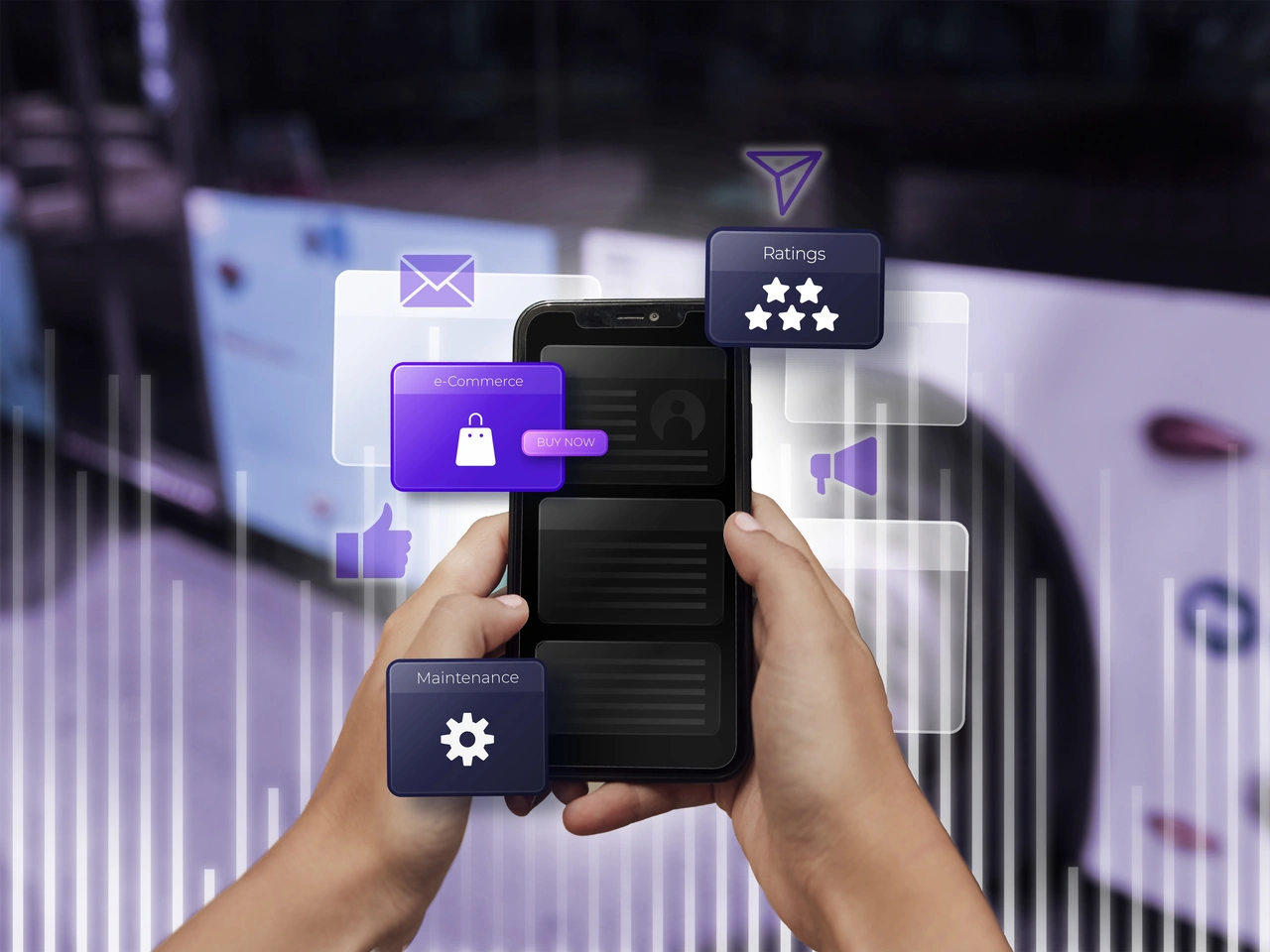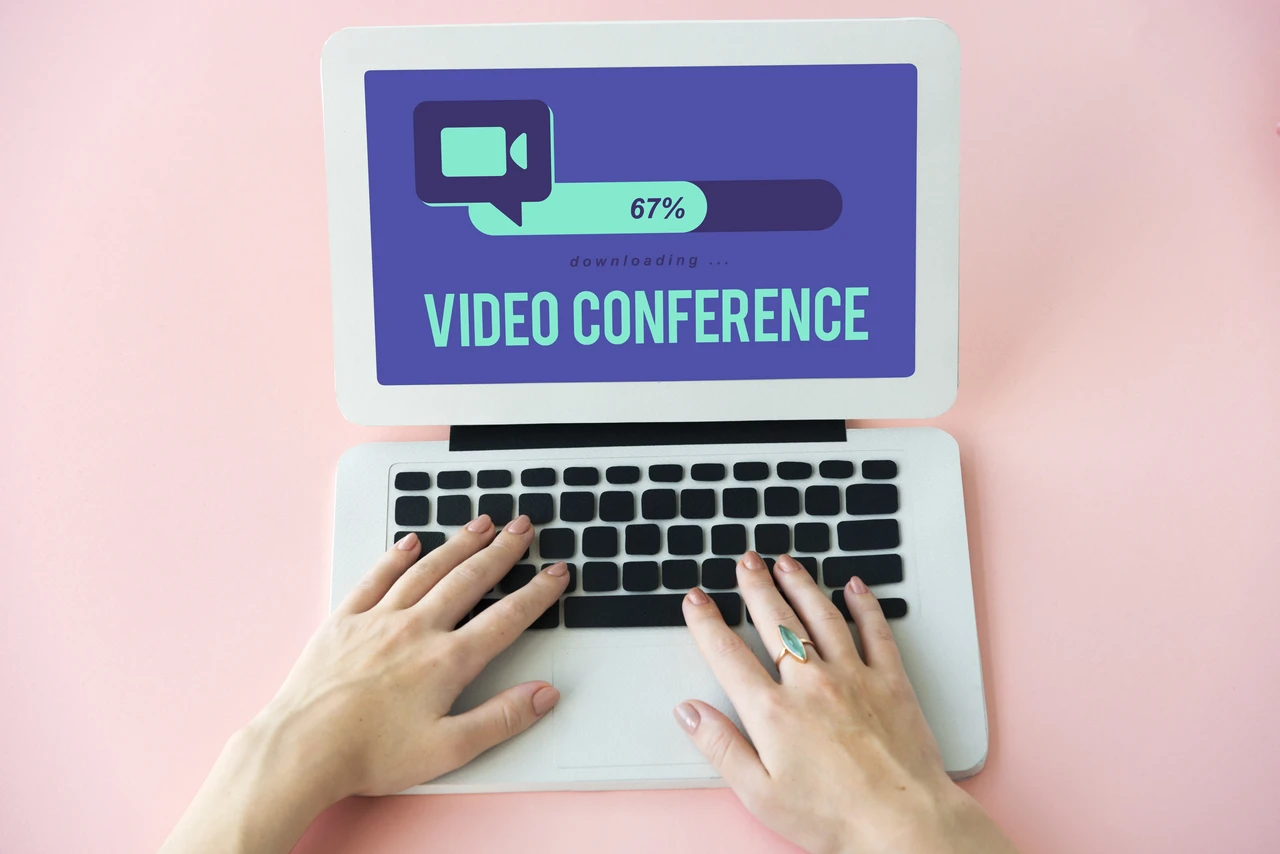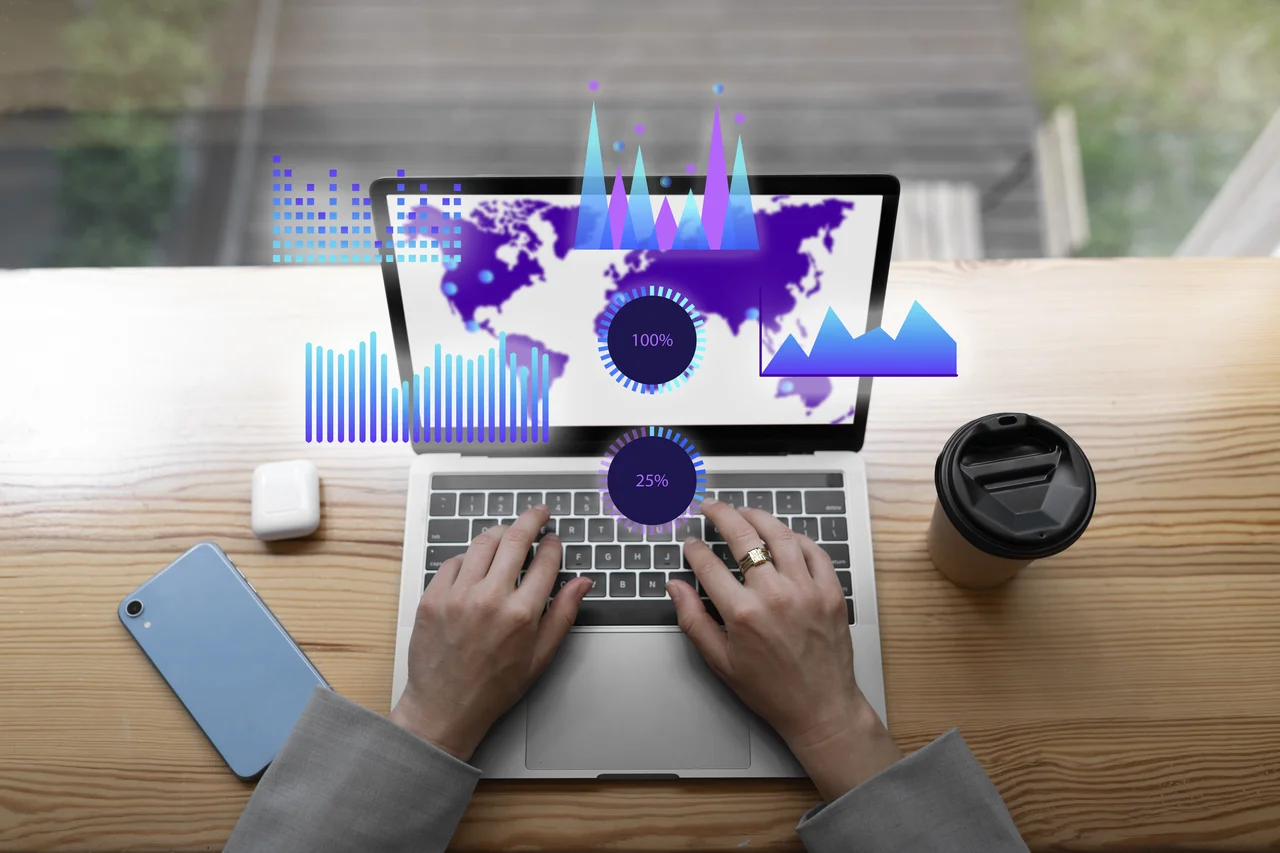Listen to article
In today’s competitive digital landscape, simply attracting visitors to your website isn’t enough. You need a strategy to bring them back and convert them into customers. That’s where retargeting comes in. But how do you know if your retargeting efforts are paying off? Is your investment actually leading to increased sales and brand loyalty?
Understanding the true effectiveness of your retargeting campaigns requires a close look at the numbers. From the impact of AI-driven personalization to the power of video content and the strategic use of PPC, various factors influence your retargeting performance.
This article dives deep into the latest statistics and trends that define successful retargeting and offer practical tips to optimize your approach and maximize ROI.
How AI is Revolutionizing Personalized Retargeting Strategies
Artificial intelligence has quickly evolved from a buzzword into a transformative tool shaping modern marketing strategies. Its ability to analyze vast amounts of data and predict consumer behavior is revolutionizing personalized retargeting. Marketers are no longer relying on guesswork; AI empowers them to deliver the right message to the right person at the right time, creating seamless and meaningful connections.
- A staggering 88% of global marketers credit AI with significantly enhancing the personalization of customer experiences across channels. Source
- Generative AI is making its mark in email marketing, with 95% of marketers finding it effective for email creation and 54% considering it “very effective.” Source
- AI is now a staple in marketing workflows, as 64% of marketers use it for content creation. Source
- Around 35% of marketers implement AI to optimize their social media posts, further showcasing its versatility. Source
- One in four marketers (25%) leverages AI to gain deeper insights into customer behavior and audience segmentation—essential for creating targeted campaigns. Source
- Marketers incorporating AI into their strategies report an average 70% boost in ROI, proving the measurable advantages of AI-driven personalization. Source
Key Takeaway
AI is not just a tool; it’s becoming a strategic necessity for brands aiming to stay competitive in an era where consumer expectations for relevant and personalized interactions are higher than ever. By integrating AI into retargeting campaigns, businesses can achieve a powerful combination of efficiency and emotional appeal, driving not only engagement but tangible results.
Pro Tip:
Dive into AI automation platforms like ChatGPT for copywriting, Jasper, or Adobe Sensei to optimize customer segmentation and create hyper-targeted retargeting content. Start small by testing AI in one campaign, then scale based on measurable results to fine-tune your strategy for maximum digial marketing ROI.
How Retargeting Ads Dominate Across Platforms: Key Insights
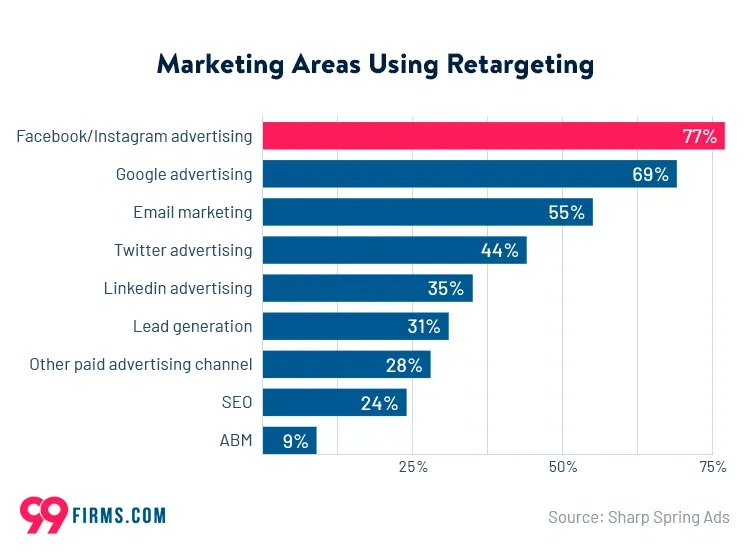
Source: 99firms
If you’re aiming to reconnect with an audience that has already expressed interest in your brand, retargeting ads are your go-to strategy. They don’t just boost visibility—they build familiarity, which is a critical driver of conversions. Platforms like Google have transformed retargeting into a powerful tool by leveraging algorithms and network reach to position ads where they’re most likely to drive results. But just how effective are these ads across major platforms? The numbers speak volumes.
- The Google Display Network can reach up to 90% of internet users with PPC ads. Source
- Over 45% of all page clicks come from ads displayed in search results. Source
- Google attracts approximately four times more users likely to click on a sponsored search ad (63%) compared to other search engines like Amazon (15%), YouTube (9%), and Bing (6%). Source
- Google’s PPC ads capture 64.6% of all clicks, indicating its dominance in the paid search landscape. Source
Key Takeaway
The stats reinforce that Google is the undisputed leader when it comes to retargeting success. Its vast network and high click-through rates make it an indispensable player in any retargeting strategy. However, this dominance presents both an opportunity and a challenge: standing out in an already saturated space requires more than just running ads—it calls for precise audience targeting, emotionally resonant creatives, and consistent testing. To see the best results, think beyond visibility: aim for ad relevance that strikes a chord with your audience.
Pro Tip:
Experiment with dynamic remarketing ads on Google to serve hyper-relevant content tailored to your visitors’ previous interactions. Use tools like Google Analytics and Google Ads’ audience segmentation to customize campaigns and convert window shoppers into long-term customers.
Pairing retargeting efforts with a strong B2B website strategy can amplify your results even further. A well-optimized website ensures that when potential customers return, they’re greeted with a seamless experience that encourages conversions.
Social Media Retargeting: Insights on Platform-Specific Performance
Social media has become the go-to arena for businesses to re-engage potential customers through targeted retargeting strategies. With platforms catering to distinct audience segments and offering a variety of ad formats, understanding where and how to allocate your resources is essential to achieve maximum ROI. By leveraging data-backed strategies tailored to each platform, brands can balance creativity with precision, ensuring their messaging resonates effectively with users.
- 65% of B2B companies have successfully acquired customers through LinkedIn ads. Source
- 37% of Instagram users report that the content of sponsored ads often aligns with their interests. Source
- 32% of advertisers find video ads to be the most effective social ad format, followed by image ads (26%), Instagram Stories (23%), and carousel ads (19%). Source
- Total ad spend on social media is projected to reach $220 billion in 2024. Source
- Social media advertising accounts for an average of 28.8% of all ad spends. Source
Key Takeaway
Platforms like LinkedIn have emerged as a powerhouse for B2B conversions, with its professional focus making it ideal for targeting decision-makers. On the other hand, Instagram shines in connecting with personal interests, making it perfect for visually engaging, consumer-driven content. The rising dominance of video ads further underscores the need for visually captivating storytelling across platforms. With social media ad spend continuing to grow exponentially, it’s clear that brands can’t afford to take a one-size-fits-all approach.
Pro Tip:
Identify where your target audience spends the majority of their time and align your ad strategy with their platform preferences. Use A/B testing to compare ad formats like carousel, video, and Stories, refining your campaigns based on audience engagement metrics. This proactive approach ensures your retargeting efforts stay relevant, impactful, and cost-effective.
Why Video is a Retargeting Game-Changer
In a world where attention is the ultimate currency, video content stands out as a powerhouse for capturing audience interest and driving engagement. Its ability to communicate complex ideas quickly, evoke emotion, and hold user attention makes it an essential tool for retargeting campaigns that aim to re-engage potential customers. But beyond just being attention-grabbing, video has proven to be a versatile medium that meets audiences where they are—whether that’s on LinkedIn, Twitter, or mobile devices.
- 69% of consumers prefer learning about new products or services through short video content. Source
- 85% of consumers want to see more video content from brands. Source
- Each week, 78% of people watch online videos, with over 55% consuming video content daily. Source
- LinkedIn users are 20 times more likely to share video content than other types of posts. Source
- Silent-viewing optimization works: LinkedIn videos designed to be watched without sound have a 70% higher chance of being completed. Source
Key Takeaway
The data doesn’t just confirm that video is appealing—it also shows how it fosters action. From more shares and reduced campaign costs to higher daily consumption rates, the statistics demonstrate that video content consistently outperforms other formats when it comes to engagement and ROI.
To stand out in the crowded digital space, brands must go beyond static ads and embrace video as a central component of their retargeting strategies. The numbers highlight that video not only resonates more deeply with audiences but also triggers higher levels of interaction across platforms like LinkedIn and Twitter. However, the real magic happens when videos are designed with intent—whether it’s optimizing for silent viewing, keeping content concise, or aligning with platform-specific user behavior.
Pro Tip:
Experiment with platform-specific video strategies to supercharge your retargeting efforts. For LinkedIn, focus on silent-friendly designs with captions or text overlays. On Twitter, keep videos short and attention-grabbing within the first few seconds. Most importantly, always optimize for mobile users, who make up a significant chunk of video consumers, ensuring your message is accessible wherever your audience chooses to engage.
PPC in Retargeting Campaigns
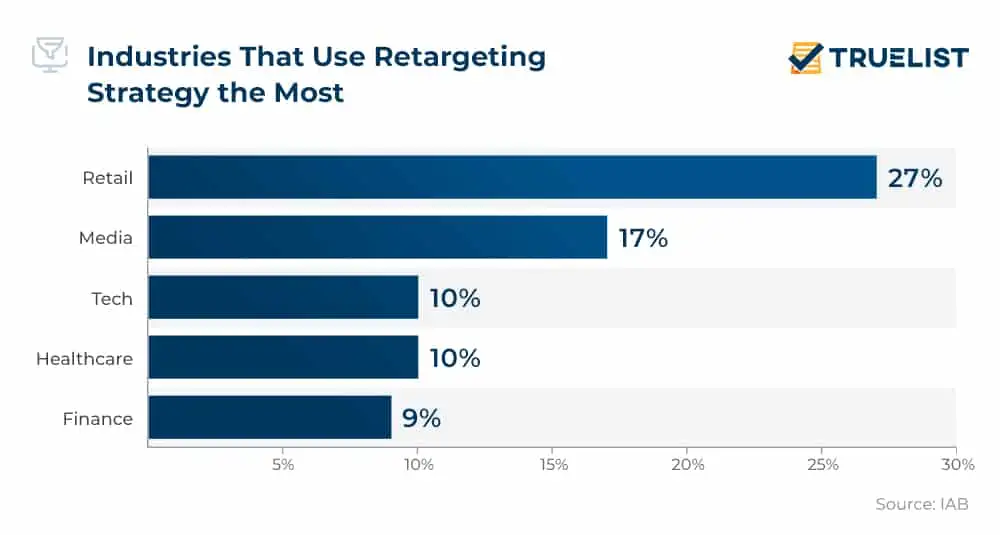
Source: Truelist
In a highly competitive digital landscape, pay-per-click (PPC) advertising has proven to be a game-changer for businesses aiming to re-engage potential customers. With its ability to deliver highly targeted ads, PPC serves not only as a tactic for acquisition but also as a cornerstone for retargeting strategies. As digital noise grows louder, leveraging PPC helps brands cut through the clutter and stay top-of-mind for audiences who’ve already shown interest—ultimately driving ROI in a measurable way.
- 65% of small-to-midsize businesses (SMBs) invest in PPC campaigns, making it one of the most popular digital marketing strategies. Source
- Approximately seven million marketers are utilizing PPC ads, with a combined budget exceeding $10.1 billion. Source
- Nearly 74% of B2B SaaS companies use PPC advertising as a vital component of their lead generation efforts. Source
Key Takeaway
PPC is one of the most effective tools for retargeting because it aligns perfectly with consumer behavior—reaching users who have already interacted with your website or brand. By meeting interested audiences where they are, these ads create an opportunity to close the conversion gap. For industries such as SaaS, where the sales cycle is longer and more complex, PPC drives sustained engagement across multiple touchpoints.
Pro Tip:
To truly maximize PPC’s retargeting potential, use dynamic ads tailored to user activity—whether it’s a specific product they viewed or a service they researched. Pair this with A/B testing to refine your messaging, and rely on analytics tools to pinpoint which audiences deliver the highest return on ad spend (ROAS). Partnering with a professional PPC service ensures your campaigns are not only optimized for performance, but also strategically aligned with your business goals—turning retargeting into a consistent revenue driver.
Harnessing YouTube’s Purchasing Power for Retargeting Success
As consumer behavior increasingly leans toward video as the preferred content format, YouTube has solidified its place as a top-tier platform in influencing purchasing decisions. For brands running retargeting campaigns, the platform offers a unique opportunity to not only re-engage users but also shorten the journey from consideration to conversion. By tapping into YouTube’s persuasive power, businesses can craft more impactful retargeting strategies that resonate with their audiences on a deeper level.
- YouTube ranks as the leading social platform influencing purchasing decisions. Source
- A remarkable 87% of shoppers who browse YouTube report feeling empowered to make quicker purchase decisions. Source
- More than 40% of global shoppers have purchased products after discovering them on YouTube. Source
Key Takeaway
These numbers highlight the immense potential YouTube holds for converting browsers into buyers. Unlike traditional advertising channels, YouTube enables a dynamic mix of in-depth storytelling, product demonstrations, and authentic endorsements, making purchasing decisions feel effortless for viewers.
Pro Tip:
To make the most of YouTube’s influence, create video content that aligns with the different stages of the buyer’s journey. Think product tutorials, testimonials, or behind-the-scenes looks that build trust and address consumer questions. Pair these with precise retargeting strategies, utilizing features like YouTube ads and remarketing lists, to nudge hesitant shoppers toward completing their purchase.
How Content Fuels Retargeting Success: Key Insights on Customer Research and Habits
Engaging customers effectively through retargeting requires more than just placing ads—it hinges on serving content that resonates with their needs, preferences, and stages in the buying journey. Today’s consumers prioritize self-guided research, and the quality of content you provide can be the deciding factor in whether they convert or move on to a competitor. With content playing such a pivotal role in decision-making, businesses need to rethink how and where they build touchpoints with their audience.
- 85% of consumers research products online before making a purchase. Source
- Customers consume an average of 4.5 pieces of content before engaging with a supplier, underscoring the necessity of delivering valuable resources throughout the buyer’s journey. Source
- B2B companies that consistently blog see a 67% uptick in monthly leads compared to those that don’t, proving the long-term impact of regular, targeted blogging. Source
- 90% of bloggers leverage social media promotion to amplify the reach of their content. Source
- LinkedIn reigns supreme for professional content promotion, with 92% of content marketers calling it their most effective channel. Source
- 44% of consumers consult at least four blog articles before making significant purchases, cementing blogging as a tool for building trust and loyalty. Source
- Half of marketers report that content marketing directly strengthens brand loyalty among existing customers. Source
- Content marketing is highly efficient, costing 62% less than traditional marketing yet delivering three times as many leads. Source
- 60% of consumers are inspired to take concrete action and research a product after reading relevant content about it. Source
- Among companies utilizing Account-Based Marketing (ABM), 63% report an ROI of at least 25%, with nearly half achieving returns of 50% or more—further proof of how precise targeting powered by curated content can deliver exceptional results. Source
Key Takeaway
In a marketplace where the buyer holds significant power, meeting them with tailored, value-driven content is no longer optional—it’s the foundation of an effective retargeting strategy. From inspiring research to nurturing leads through consistent blogging, content gives brands the opportunity to guide prospects seamlessly through the sales funnel while building long-term trust. Platforms like LinkedIn offer a unique chance to reach decision-makers directly, while ABM strategies maximize your ROI by focusing on high-value accounts.
Pro Tip:
Analyze the performance of your content across channels to identify which types (e.g., blogs, case studies, videos) yield the highest engagement. Then, marry those insights with user-specific data to craft personalized retargeting campaigns—because the more relevant your approach, the better the results.
Influence of E-Commerce and Ads on Consumer Behavior
As the boundaries between offline and online shopping continue to blur, e-commerce has solidified itself as a key driver of global commerce. To stay competitive, brands must not only establish a strong digital presence but also understand how consumer interaction with ads influences purchasing behavior. The surge in online transactions and ad engagement offers marketers invaluable opportunities to refine their strategies and capture more market share.
- Nearly half—47%—of all global purchases are now conducted online, illustrating how essential it is for businesses to invest in digital-first strategies. Source
- A compelling 65% of shoppers click on ads when making a purchase, showcasing the outsized role that targeted advertising plays in shaping buying decisions. Source
Key Takeaway
These insights underscore a vital truth: your potential buyers are online, actively engaging with ads and looking for solutions that resonate with their needs. This is a wake-up call for brands to not just participate in the digital space but dominate it by delivering ads that strike the right balance between relevance, value, and timing.
Pro Tip:
Enhance your ad engagement by leveraging audience segmentation tools to craft hyper-personalized campaigns. By analyzing previous buying behaviors or ad interactions, you can serve dynamic ads that are tailored to individual preferences, boosting both click-through rates and conversions.
Harnessing Data and Integration to Supercharge Retargeting Success
In the competitive world of digital marketing, retargeting strategies can’t thrive without a sharp focus on both data insights and strategic integration. Yet, many organizations are failing to maximize their potential. From missed opportunities in data utilization to disconnected marketing efforts, essential gaps in strategy can leave significant revenue on the table. By leveraging data effectively and embracing integrated approaches, marketers not only improve conversion rates but also create a seamless customer journey that drives higher ROI.
- Over one-third of marketing leaders prioritize conversion rates as their most important key performance indicator (KPI), proving that optimizing every stage of the conversion funnel is a top priority. Source
- A concerning 44% of businesses admit they lack clarity on the impact of their marketing efforts, highlighting a critical need for better metrics and actionable insights. Source
- A staggering 87% of marketers believe data is their company’s most underutilized asset, signaling vast potential for businesses to enhance decision-making and performance through data-driven strategies. Source
- Marketing campaigns that adopt an integrated approach see an average of 50% greater ROI, demonstrating the power of synergy between channels and teams. Source
- Aligning marketing teams and consolidating efforts across channels can boost campaign efficiency by 31%, streamlining the path to conversions and reducing resource wastage. Source
Key Takeaway
For modern marketers, a siloed or intuition-driven approach is no longer sustainable. The numbers make it clear: utilizing data effectively and fostering cross-channel integration are the cornerstone strategies for achieving higher returns and campaign success. But these aren’t just technical goals—they’re opportunities to create more personalized, consistent, and impactful experiences for your audience. When your data insights inform your marketing decisions and your campaigns work in harmony, the result isn’t just improved efficiency; it’s a stronger connection with your audience that drives loyalty and long-term growth.
Pro Tip:
Dive deeper into your data to uncover audience behavior trends and segment campaigns accordingly for more personalized retargeting. Also, invest in marketing automation trends and toolsthat bridge the gap between channels, ensuring your retargeting campaigns remain consistent, efficient, and impactful across all touchpoints. By adopting digital marketing strategies for small businesses, you can further enhance your retargeting efforts, making them more targeted and cohesive, no matter the size of your organization.
Personalization and Geotargeting on Retargeting Success
When it comes to retargeting, a one-size-fits-all approach simply doesn’t cut it. To capture the attention of modern audiences, campaigns need to feel personal and relevant—right down to where your audience is located. By leveraging personalization and geotargeting, brands can elevate their retargeting efforts from generic noise to compelling experiences that drive action.
- Digital ad campaigns that target specific locations achieve a 20 times higher success rate compared to traditional banner ads that lack location-based targeting. Source
- Personalizing PPC landing pages can boost effectiveness by 5%. Source
Key Takeaway
The key takeaway here? Audiences crave relevance. Incorporating location-specific targeting and personalized landing pages creates a more meaningful interaction, making users feel like the ad was crafted just for them. These small but impactful efforts can translate into significant increases in engagement and conversions.
Pro Tip:
To maximize your campaign’s impact, don’t stop at location-based targeting—factor in local events, seasonal trends, or cultural nuances to make your ads even more contextually relevant. Use tools like Google Ads location targeting or Facebook’s geotargeting features to refine your strategy and reach the right audience, at the right time, in the right place.
Retargeting Potential Through Martech and Strategic Personalization
In an age where consumers expect tailored experiences, marketers are often caught juggling between sophisticated tools and the complexity of their martech stacks. To achieve meaningful retargeting results, the key lies in simplifying workflows while leveraging data-driven personalization. A balanced approach—where strategy meets smart technology—can transform fragmented campaigns into seamless customer journeys.
- A significant 64% of marketers admit feeling overwhelmed by the intricacy of their martech ecosystems, signaling a growing demand for simplified and more integrated solutions. Source
- Among top email marketing strategies, list segmentation (51%), personalization (50%), and triggered emails (45%) emerge as key drivers of retargeting success. Source
Key Takeaway
The intersection of technology and strategy presents both challenges and opportunities. Instead of being bogged down by complex systems, focus on martech that empowers efficiency and flexibility. Personalization, paired with automation tools like triggered emails, can reignite connections with your audience at critical touchpoints.
Pro Tip:
Conduct quarterly audits of your martech stack to ensure your tools align with campaign goals. Eliminate redundancies, and invest in platforms that prioritize automation and advanced personalization to create smarter, more effective retargeting efforts.
Why Mobile-First Retargeting is a Must for Campaign Success
As mobile devices continue to dominate how users access the internet, retargeting campaigns that don’t cater to mobile users risk falling behind. A seamless mobile experience not only ensures that your ads reach users effectively but also improves the chances of driving meaningful conversions. To stay competitive, businesses must prioritize mobile-first strategies in their retargeting efforts.
- Mobile devices account for approximately 50.5% of website traffic, surpassing desktop devices at 46.5%, which highlights the necessity of mobile-focused retargeting. Source
Key Takeaway
With mobile increasingly becoming the default browsing device, retargeting campaigns must evolve to meet users where they are. From ad placements to landing page designs, every touchpoint should be optimized for smaller screens to provide a frictionless user journey.
Pro Tip:
Go beyond basic mobile optimization by testing ad designs, loading speed, and navigation specifically on mobile devices. Use responsive layouts and thumb-friendly interfaces to boost engagement and keep your mobile audience hooked.
Conclusion
As the data reveals, retargeting is an indispensable tool in the marketer’s arsenal, blending technology, creativity, and strategy to deliver personalized experiences that convert. From the dominance of AI in personalization to the power of video content and the growing influence of platforms like YouTube and LinkedIn, each element of retargeting contributes to the bigger picture: driving meaningful engagement and maximizing ROI.
However, the success of retargeting campaigns hinges on more than just adoption—it requires a careful balance of analytics, content strategy, and cross-platform integration. Leveraging actionable insights, optimizing for mobile, and adopting location-specific targeting can take your retargeting efforts to the next level. Remember, retargeting isn’t just about reconnecting with your audience; it’s about delivering value at every stage of the buyer’s journey.
Ready to boost your traffic and grow your website? Your customers are looking for you, and our SEO services can help you be found across search engines. Let’s transform your retargeting performance into a data-driven success story—reach out today!
About Retargeting by the Numbers: Key Stats That Prove It Works
This guide was written by the Scopic Studios team and reviewed by Araksya Hakobjanyan, SEO Lead at Scopic Studios.
Scopic Studios delivers exceptional and engaging content rooted in our expertise across marketing and creative services. Our team of talented writers and digital experts excel in transforming intricate concepts into captivating narratives tailored for diverse industries. We’re passionate about crafting content that not only resonates but also drives value across all digital platforms.
Note: This blog’s feature image is sourced from Freepik.










